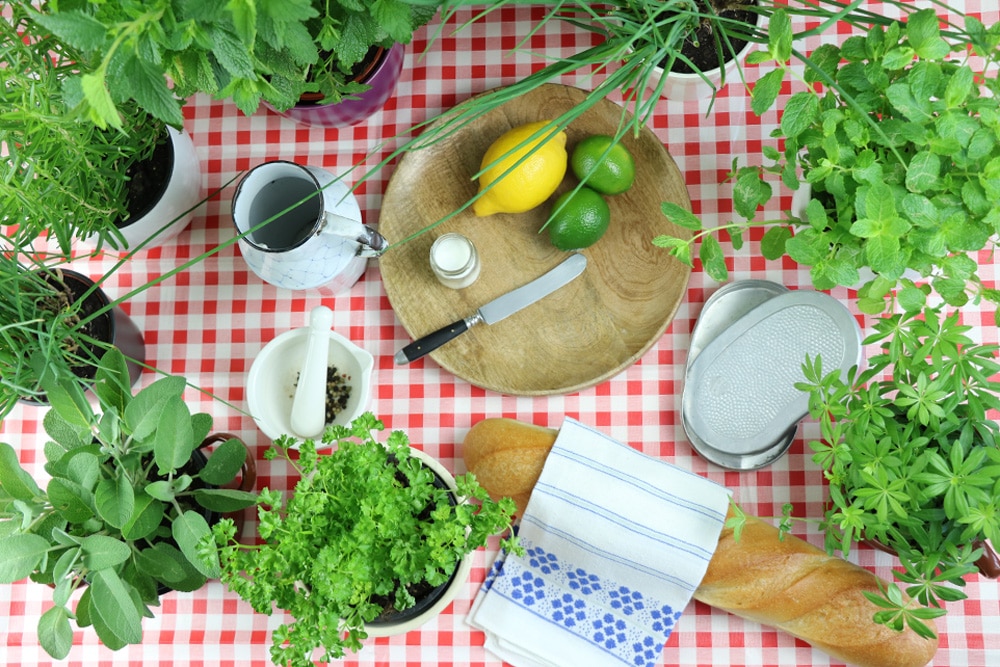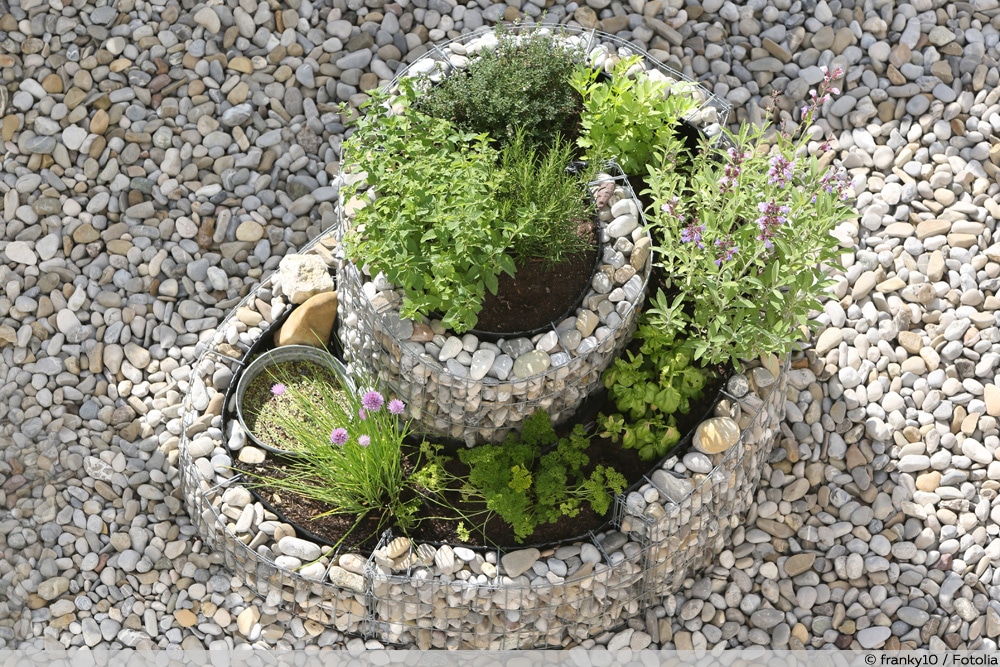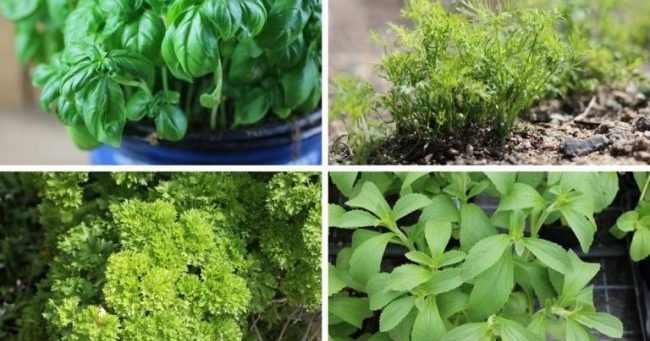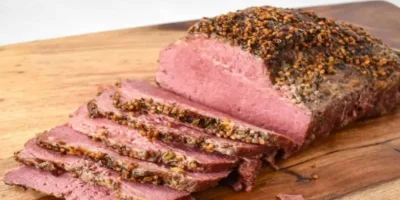If herb plants do not grow healthily even with the best care, this is often due to the wrong plant neighbours in the herb garden. There are different reasons why not all herb species harmonize with each other. Which herbs fit well together and which herbs should not be planted together should be taken into account in advance with any planning.
Planting plan important for the herb garden
Most hobby gardeners prefer mixed crops. This means that different plant species share beds or balcony boxes. This also applies to the herb garden, where several species are planted. A planting plan is advisable for the following reasons.
Which herbs should not be planted together: Compatibility
Due to the properties and demands of different herb species, intolerances can occur that have a negative effect on the plants in the nearby environment. On the other other way, some herb species can complement each other perfectly and promote the healthy growth of the plant neighbours.
Which herbs should not be planted together: Appearance
Many hobby gardeners attach great importance to optical factors. Especially on smaller balconies, the correctly chosen herb plants can bloom the whole summer with coordinated colors. They offer an alternative or tasteful addition to flowering summer flowers. If herbs are placed that bloom for a month at the same time, the summer flair for the rest of the season remains.
Aesthetics is another aspect that should be considered in planning before planting and cultivating herbs. The growth heights and shapes play a major role here. A careless approach without prior planning and precise information about the individual herbs can quickly lead to a chaotic and stillos-looking sight, especially when planting/cultivating young plants.

Which herbs should not be planted together: Location and soil conditions
Herbs can place different demands on the light and soil conditions. Some like it moist shady or semi-shady, others love the dryness in the sun. Prior planning allows the plants to be selected in advance in such a way that they invariably place the same conditions on the site and the soil conditions. For example, if sun- and drought-loving plants are placed in the shade in moist soil, they will enter. Intelligent planning helps to avoid this by appropriate combinations.
Why do some herbs (not) fit together?
Whether different herbs can be tolerated depends in principle on the partly different claims and properties of the respective species. This usually results in reactions from one or more neighbouring plants.
Pros and cons of tolerable/incompatible combinations
With a good compatibility of neighbouring herbs as a mixed crop, and knowing which herbs should not be planted together, gardeners can benefit from numerous advantages, such as:
- Differently high nutrient requirements in mixed culture make the earth less quickly tire
- There is a mutual supplementation by root excretions
- Outgassing of some varieties can protect disease-prone herbs
- In the event of a pest infestation, certain neighbouring herbs can attract beneficial lings that kill pests
If there is no good tolerability between the different herbs, this can have a detrimental effect as follows:
- Mutual growth inhibitions
- Deficiency symptoms and, if necessary, death if neighbouring herbs deprive the soil of all nutrients
- Exhausted soil due to one-sided stress
- Developmental disorders and lack of ability to develop herb plants if the neighbour is too dominant
Matching herbs
Tip: First rule: One-year-old herbs to the one-year-old – perennial herbs to the perennial ones!
Mixing of one-year-old and perennial herbs leads to intolerances in most cases. This is mainly due to the fact that perennial herb plants suffer when new neighbours sit next to them every year. In addition, one-year-old herb species should not be planted in soil where a one-year-old herb had previously been planted. This could have a negative impact on prosperity. Therefore, this rule of thumb should be taken into account in planting planning.
One-year-old herbs
- Anise (Pimpinella anisum)
- Basil (Ocimum basilicum) – also available as perennial varieties
- Fenugreek (Trigonella)
- Borage or cucumber herb called (Borago officinalis)
- Dill (Anethum graveolens)
- Real chamomile (Matricaria chamomilla)
- Garden cress (Lepidium sativum)
- Garden-Senfrauke also called Rocula spice (Eruca sativa)
- Fennel (Foeniculum vulgare) – also perennial depending on the variety
- Capuchin cress (Tropaeolum majus)
- Kerbel (Anthriscus cerefolium)
- Coriander (Coriandrum sativum)
- Cuminum cyminum
- Majoran (Origanum majorana) – perennial, depending on the variety
- Paracresy (Acmella oleracea)
- Parsley (Petroselinum crispum)
- Rosemary (Rosmarinus officinalis)
- Mustard seeds – white mustard (Sinapis)
- Summer bean weed (Satureja hortensis)
- Stevia (Stevia rebaudiana) if it cannot be wintered ideally
Perennial herbs
- Wild garlic (Allium ursinum)
- Bearroot (Meum athamanticum)
- Barbarakraut (Barbarea vulgaris)
- Basil (Ocimum basilicum) – also available as one-year varieties
- Beifuß (Artemisia vulgaris)
- Rumex sanguineus
- Wetwater (Nasturtium officinale)
- Currywort (Helichrysum italicum)
- Estragon (Artemisia dracunculus)
- Fennel (Foeniculum vulgare) – also one-year lyerism, depending on the variety
- Huflattich (Tussilago farfara)
- Kalmus (Acorus calamus)
- Caraway (Carum carvi)
- Garlic rake (Alliaria petiolata)
- Levisticum officinale
- Cochlearia officinalis
- Majoran (Origanum majorana) – also one-year lyerism, depending on the variety
- Mint (Mentha)
- Carnation (Syzygium aromaticum)
- Oregano (Origanum vulgare)
- Pimpinelle (Sanguisorba minor)
- Saffron (Crocus sativus)
- Sage (Salvia officinalis)
- Rumex acetosa
- Chimes (Allium schoenoprasum)
- Celery (Apium graveolens)
- Spitzwegerich (Plantago lanceolata)
- Stevia (Stevia rebaudiana) – without ideal hibernation one year
- Thyme vulgaris
- Forest Master (Galium odoratum)
- Vermouth (Artemisia absinthium)
- Winter bean weed (Satureja montana)
- Lemon Balm (Melissa officinalis)
Ideal herbal combinations
Basil
Basil is available as a one-year-old herb as well as a multi-year herb. Planted/cultivated between the herbs of the respective category, it is extremely well tolerated with any plant neighbour, except with mint and lemon balm. It is even advisable to always include basil. Basil has the property to prevent mildew in the herb garden and to keep the white fly (greenhouse moth shield louse – Trialeurodes vaporariorum) at a distance. Flies and mosquitoes do not like the scent emanating from the basil and also stay away. This is particularly advantageous if the herb garden is close to seats.
Best one-year herbal combinations
Rosemary not only satiste well with basil, but also contributes to improved growth of Ocimum basilicum. Although all one-year-old plants in the herb garden harmonize well with each other, the following combinations complement each other in a particularly beneficial way, so that they are even planted/cultivated in a small space, such as in a flower box or pot together.
- Parsley, dill, marjoram and borage
- Dill, Coriander, Chamomile, Mustard
- Borret, Fennel, Kerbel
- Fennel, rocket, mustard, and rosemary
- Garden cress, cumin, chamomile, rosemary
- Capuchin cress, coriander, cumin, rosemary and mustard
- Kerbel, Mustard, Rosemary
- Parsley, arugula and mustard
Best perennial herbal combinations
- Lemon balm, sage, chiunder, tarragon and thyme
- Pimpinelle, Lemon Balm and Tarragon
- Oregano, sage and winter bean weed
- Celery with thyme
- Caraway, lovage, lemon balm, sage and celery
- Fennel, lovage, sage, celery and thyme
Intolerance guaranteed
- Basil – Lemon Balm and Mint
- Dill with fennel, (cross) cumin and garden cress
- Fennel with coriander, garden cress, cumin, marjoram and vermouth
- Majoran – Thyme
- Caraway – Wormwood
- Garden cress with chervil, coriander, parsley, rocket and chives
Herbal spiral
There are ways to get around the rules about which herbs should not be planted together. An optimal solution to integrate one-year-old and perennial and not well-tolerated plants into a herb garden offers a herb spiral – also called herb snail. Especially herbs with different location and soil requirements can meet the herbal spiral.

The herb spiral is a three-dimensional herb bed that sits like a snail’s house and rises evenly. It consists of four different soil zones: at the very bottom a wet microclimate, then a wet zone with humic, nutrient-containing soil, followed by the normal zone with semi-shade and at the top the dry zone. The transitions of each zone flow smoothly into the following.
Non-harmonizing herbs
Since the four areas of the earth are connected only at one point, namely the respective transition to the next zone, one-year-old, perennial herbs and those that do not tolerate each other well can be optimally planted in the herb snail. Care must be taken here to ensure that they are not planted directly next to each other. This means that at the transitions there should always be herbs next to each other, which, despite their differences, can be tolerated.
- Borretsch with cumin, sage and thyme
- Dill with coriander, lovage, lemon balm, sage, thyme and vermouth
- Kerbel with lovage, mint, sage, chibs and thyme
- Parsley with mint
- Sage and chibs
- Sage with rocket and mustard
- Coriander with lovage, mint, balm, sage, thyme and wormwood
- Caraway with all herbs, except wormwood
- Mint with almost all herbs except lemon balm, basil and celery
Planting examples
Suitable herbs for wet and wet zone
- Wetwater (Nasturtium officinale)
- Watermint (Mentha aquatica)
- Kalmus (Acorus calamus)
Suitable herbs for the humic and nutritious wetzone
- Borretsch (Borago officinalis)
- Dill (Anethum graveolens)
- Kerbel (Anthriscus cerefolium)
- Parsley (Petroselinum crispum)
- Rumex acetosa
- Chimes (Allium schoenoprasum)
- Cut celery (Apium graveolens)
Suitable herbs the normal zone
- Wild garlic (Allium ursinum)
- Basil (Ocimum basilicum)
- Rumex sanguineus
- Coriander (Coriandrum sativum)
- Caraway (Carum carvi)
- Levisticum officinale
- Majoran (Origanum majorana) – also copes in the dry zone
- Melissa officinalis
- Oregano (Origanum vulgare)
- Pimpinelle (Sanguisorba minor)
Suitable herbs for the sunny dry zone
- Currywort (Helichrysum italicum)
- Majoran (Origanum majorana) – also copes in the normal zone
- Rosemary (Rosmarinus officinalis)
- Sage (Salvia officinalis)
- Summer bean weed (Satureja hortensis)
- Thyme vulgaris
Which herbs work together visually?
If herbs are to serve more than just the refinement of food, the flowers and their color play an essential role. How herbs want to be combined for optical reasons depends on the personal taste as well as, if necessary, the color aspects of the direct environment.
Aesthetically, herbs seem most beautiful if they do not have the same height, so as not to let boredom arise at the sight. If you want to have it full of flowers all summer long, you can rely on herbs with different flowering times. It should be noted that some herbs become inedible when they begin to flower.
Here are some examples of flowering herb species:
- Barbarakraut (Barbarea vulgaris) – Height of growth 30 centimetres to 60 centimetres – yellow flowers – flowering time: May to June
- Wild garlic (Allium ursinum) – height of 15 centimetres to 50 centimetres – white flowers – flowering time: April to June
- Blood amp (Rumex sanguineus) – Growth height 20 centimeters to 60 centimeters – red-brown flowers – flowering time: May to June
- Dill (Anethum graveolens) – Growth height 30 centimeters to 75 centimeters – yellow flowers – flowering time: May to August
- Capuchin cress (Tropaeolum majus) – height of growth 15 centimetres to 30 centimetres – yellow-orange-coloured flowers – flowering time: June to October
- Peppermint (Mentha x piperita) – growth height 30 centimeters to 90 centimeters – white flowers – flowering time: June to July
- Paracresy (Acmella oleracea) – height up to 30 centimetres – reddish flowers – flowering time: May to September
- Chime (Allium schoenoprasum) – height 10 centimetres to 30 centimetres – blue or violet flowers — Flowering time: June to July
- Thyme (Thymus vulgaris) – Growth height 10 centimeters to 40 centimeters – pale pink to light purple flowers – Flowering time: June to October




